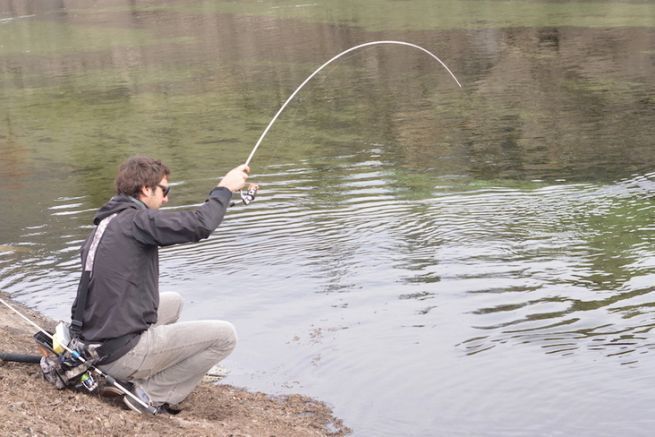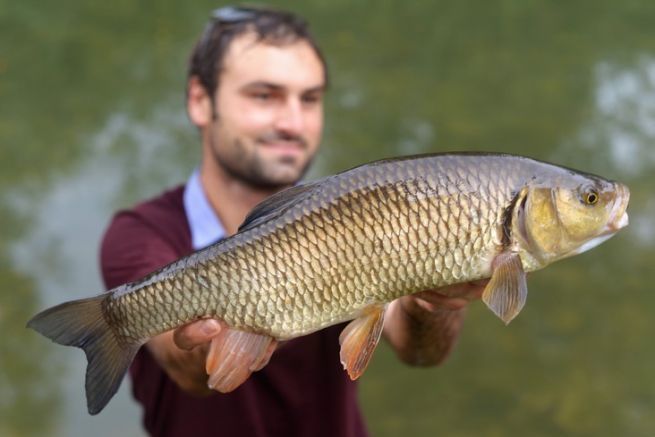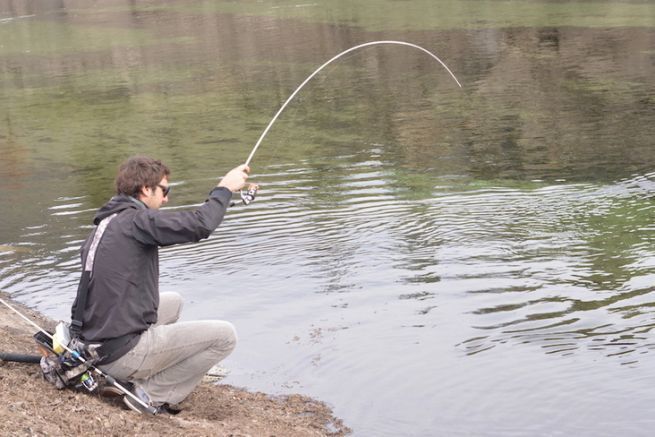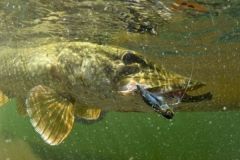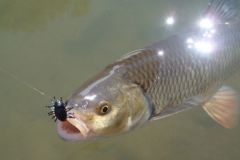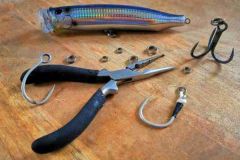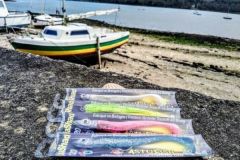Fixtures that work
Not all lures work when sight-fishing. I'm particularly fond of weightless rigs. The impact of the lure falling into the water is less noisy and the lure either stays on the surface or sinks very slowly.
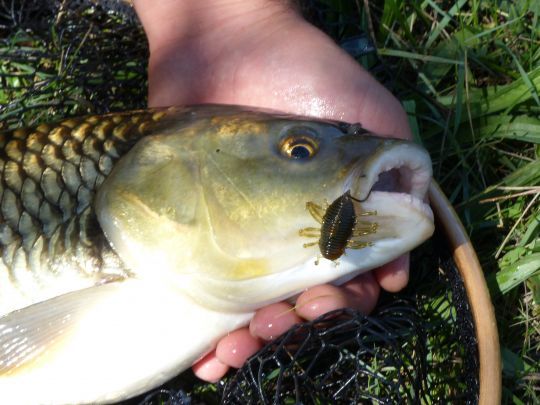
Floating mounts...
A single hook and an insect lure or blackberry are ideal for many fish, including chub. When there's a bit of wind or you need to cast further out, I sacrifice buoyancy for a micro lead head consisting of a tungsten microbead threaded onto a hook.
... flowing slowly...
The wacky rig is also renowned for a wide range of species, including black bass, perch and trout! When the environment is very cluttered, you can replace the single hook with a small, unplumbed Texas hook to allow the lure to slip naturally through weeds or roots.
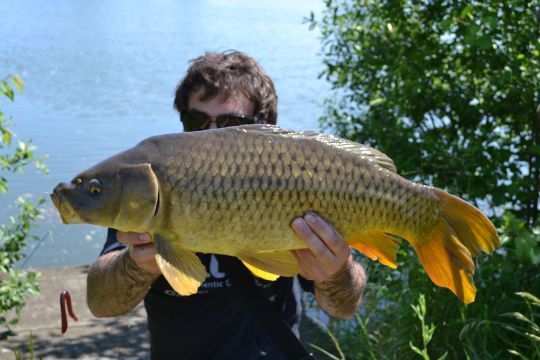
... flowing
When the fish are close to the bottom, you need to weight the lure to reach the fish and arouse their interest. Light round lead heads, tungsten ball-weighted hooks or microjigs sink slowly and precisely. They are easy to control in drifts and the cast is clean. This is particularly true for barbel, carp and black bass.
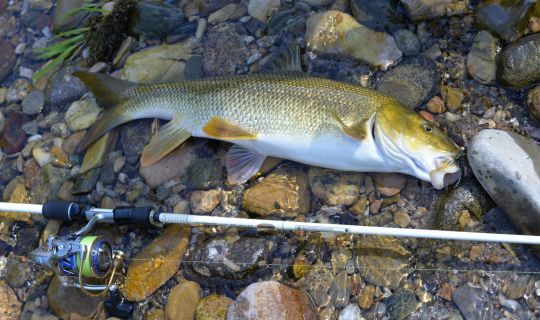
Small swimbaits or surface lures under 5 cm are also ideal. Here again, choose floating or suspending lures.
The right equipment
For optimal sight-fishing, a light approach is ideal. Of course, you'll need to adapt the power of your rig to the fish you're targeting. Obviously, sight-fishing for catfish will not require the same equipment as sight-fishing for trout or chub!
For summer fishing, I use a UL to ML (Ultra Light to Medium Light) rod with a full tip. The full tip allows you to whip an unweighted, lightweight micro soft lure even with little casting space. I use a Pepper S198UL Micro Jig Special rod or a Pepper S210ML Akoya pearl, 1.98 m and 2.10 m long respectively.
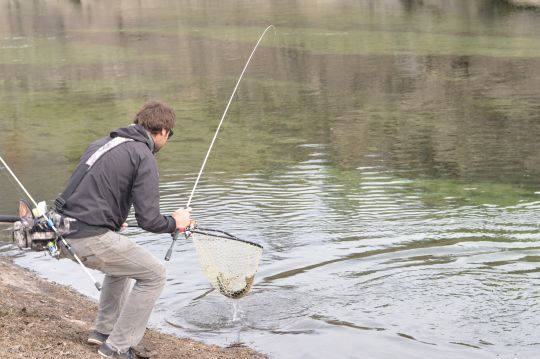
The reel is a size 1000 to 2500, fitted with fine braid in PE0.3 to PE0.8 (6 to 16/100ths), finished with a fluorocarbon or nylon leader. Braid is thinner than monofilament for the same resistance, so you can cast lightly-weighted lures farther and more accurately with less effort.
The nature of the leader will depend on several parameters. Nylon being buoyant, it will be more suitable for surface presentations. Fluorocarbon, on the other hand, is sinking, making it more suitable for deeper presentations or when there are numerous obstacles in which the line can rub. In fact, fluorocarbon is more resistant to abrasion than nylon or even braid.
